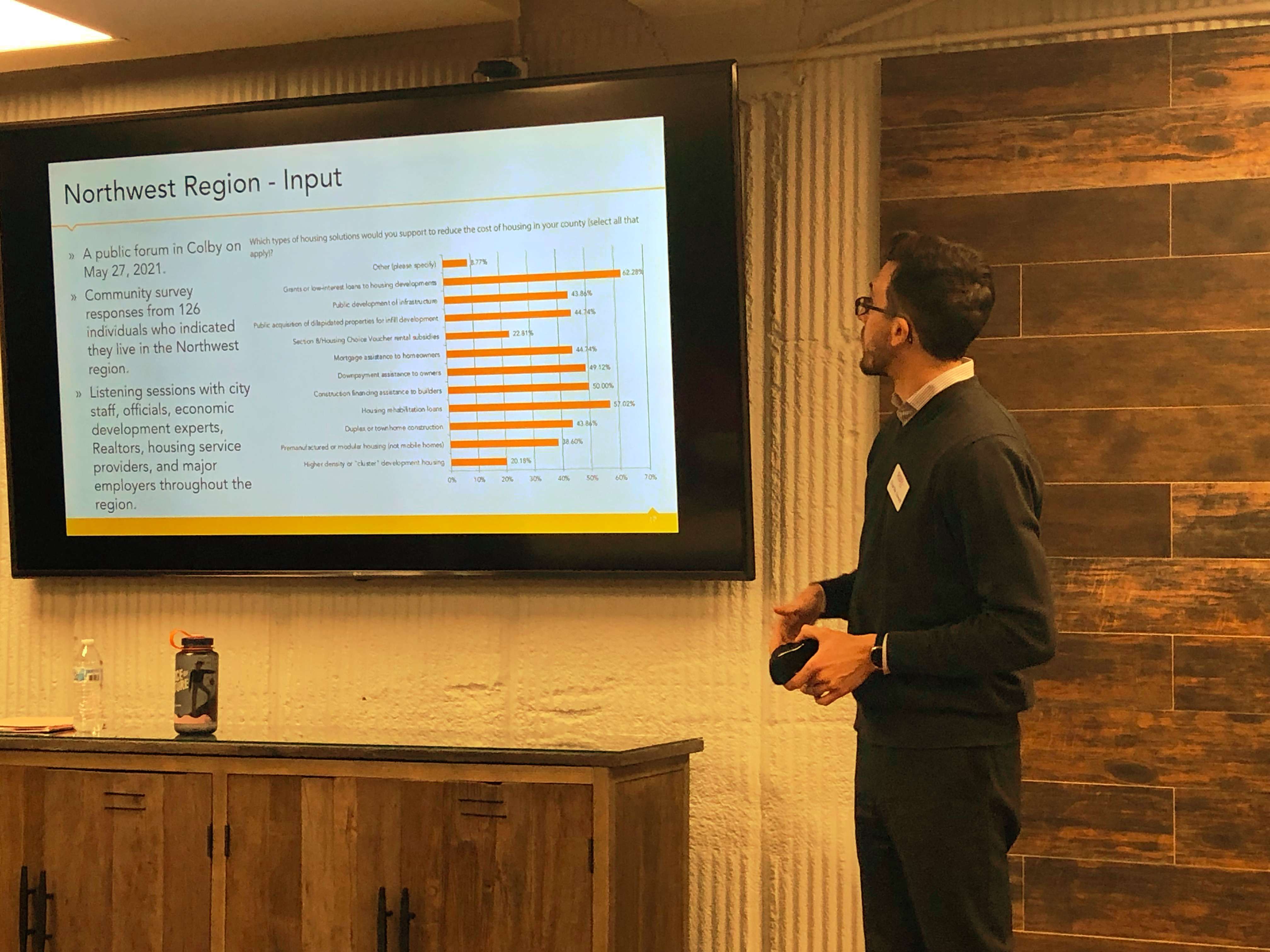
By CRISTINA JANNEY
Hays Post
There are no silver bullets to solve the state's housing issues, according to presenters at a meeting Tuesday in Hays on the state's latest housing survey.
The complex problem is going to take effort from state, local and private partners.
Amy Haase and Charlie Cowell of RDG Planning & Design were on hand to highlight survey findings as well as strategies that could be used to deal with issues that emerged in the statewide survey.
Aging populations and housing stock
Although Ellis County has a lower median age than many of the surrounding northwest Kansas counties, likely because of the college, the survey and accompanying listening tours noted a need for more accessible housing so people can age in place.
Almost all counties in northwest Kansas have had in an increase in the number of residents who are 55 years old or older since 2010.
The survey found many Kansas communities, both urban and rural, are dealing with aging housing stock. Most of the housing stock in Kansas was built before 1960.
However, Ellis County's stock tended to be newer than many of the surrounding northwest Kansas counties.
The survey found the age of the housing stock correlated with the condition of the houses, with older homes generally being in worse condition than newer homes, Cowell said.
Depressed values in many communities, but not Ellis County<br>
Housing values in Ellis County were categorized as strong compared to other counties in the region and across the state. In rural counties especially, housing tended to be undervalued, Cowell said. New housing can't to be built for what it can be sold for in the market, he said.
"That can lead to issues with financing or with a developer even doing a project," he said.

The survey considered the cost burden of housing. A person or family is considered cost burdened for housing if they spend more than 30 percent of their income on housing.
Because a lag in the release of census data, information on income and inflation had to be used from 2019.
Based on the old data, the number of renters who are cost burdened by housing costs has increased since 2010. The percentage of cost burdened renters is also higher than home owners.
"I think something we heard in every single listening session is there's no housing," Cowell said. "There's nothing on the market. We need homes in every single price point."
Families who are growing and their incomes are growing can't upgrade into larger, more expensive homes because there aren't any available. Families who wish to move into starter homes can't move out of rentals, because the growing families are stuck in their starter homes.
A look at Ellis Co. and north-central Kansas
Hays was grouped in the north-central region of the state. Issues the survey found in this region included:
• Retirees and remote workers expressed interest in moving to the area.
• The housing was of mixed quality due to age.
• There was a desire for greater knowledge sharing on housing.
• There was a need for a greater variety of housing.
• There was a need for rehabilitation or demolition of older houses or housing units.
"A need for greater housing variety probably pertains to all of our regions, but we put it on here because it was expressed quite a lot," Cowell said. "This pertains in this region in particular to employers trying to hire employees.
"They have someone on board. They come to look for a house. They can't find anything that fits what they need. They end up declining the job."
The No. 1 response to the question "What do you think would decrease the cost of housing in your county?" was housing rehab.
The northwest region had most of the same housing issues as the north-central region. In the northwest region, grants or low-interest loans to housing developers was the top solution listed by survey respondents to decrease housing costs.
Housing goals and strategies
Amy Haase of RDG then addressed statewide housing goals. These included:
• Extend housing security
• Address building trades labor shortage
• Extend existing human capital resources
She said the state needs to make sure it has housing for every stage of life — from the 20-year-old who is just entering the housing market for the first time, to the family who wants to move up, to the empty nester who would like to downsize to something low maintenance.
The state has seen an increase in the number of low-income housing units that used tax credits for construction that are asking to leave the program early. Fewer new units are also being built. Haase said the state needs to concentrate on keeping as many of those units available for low-income families.
In order to get new housing stock on the market, the state needs to train and retain more skilled workers in the building trades. This could include older, experienced workers sponsoring inexperienced workers through their training or increasing funding to community college or technical college trade programs.
"One of the things we heard in every single community, it didn't matter if it was Kansas City or Russell, Kansas," Haase said, "we were hearing we don't have enough people to actually build homes. We don't have people to swing hammers and install toilets."
Many workers who also staff low-income housing programs are nearing retirement age. A knowledge base will also be lost there if new workers are not found and trained at those agencies, Haase said.
As the state moves froward from this report, Haase outlined a number of statewide and local strategies that could address housing needs.
• The state could increase funding to its moderate-income housing program, as each year far more money is requested than allocated.
• It could expand business incentive programs to housing developers.
• Rent-to-own programs can help households build equity.
• Voters can fund bond programs to pay for infrastructure or communities can support developments through RHIDs.
• State tax credits may be needed to fill gaps for low-income housing developments.
• Landlords need to be encouraged to accept Section 8 vouchers.
• Tax credits could be offered to cover gaps between building a new home or apartment complex and the selling price or market rent.
• Funding could be increased to energy efficiency programs to make living in older homes more affordable.
• Vacancy rates could be addressed through housing rehabilitation or demolition of blight.






